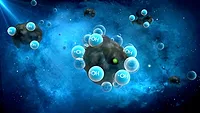What You Need to Know About Vehicle Biohazard Remediation
Vehicle cleaning involves a thorough, multi-step program to ensure the surfaces are free of bio and safe to use
Many bioremediation projects happen at structures such as homes and hotels, but what few people know is how frequently there are calls for non-structure biohazard clean-ups, such as autos and machinery. Some of the more interesting challenges include industrial incidents, suicides or accidents in cars and other vehicle contaminations. Nationally, training programs are popping up to teach this as an additional service offering for traditional cleaning companies, but what may not be generally understood is that vehicle remediation is subject to the same rules and regulations as structural biohazard jobs.
Also, not all vehicle insurance policies will cover bioremediation, so remediation companies that are considering expanding their services to include this type of bio work should be prepared to help clients understand the complexities up front. The following outlines a general set of best practices related to proper cleaning and remediation of vehicles.
To Remediate or Not to Remediate?
As with all remediation projects, vehicle biohazard situations can vary widely, from simple to complex. Some cleanups involve vehicle break-ins, where a careless perpetrator was injured during the crime. This means crews are responsible for the removal of sharps, in addition to blood and biohazards. In cases involving suicides or accidents with injuries, damage to the interior can be more widespread.
Sometimes the cost of cleaning ends up being higher than the value of the vehicle. However, particularly in cases involving specialty fleet or rental cars, semi-trailer trucks or high-value luxury cars, the client may still find it cost-effective to salvage the vehicle by having it professionally remediated.
Test, Clean and Test Again
Just as with structural remediation projects, vehicle cleaning involves a thorough, multi-step program to ensure the surfaces are free of bio and safe to use. Here’s a look at these steps:
1. On first inspection, a technician in full protective gear should perform an ATP (adenosine triphosphate) test on affected surfaces before beginning the cleaning process. This procedure employs a hand-held device and swab to test the presence of ATP molecules, which indicate that cellular activity is taking place (all living organisms give off ATP as they use energy). ATP testing is used frequently for measuring contamination in food processing and hospital environments.
2. Any materials affected by biohazard which can’t be truly cleaned and sanitized should be removed and disposed of in accordance with local regulations for biohazard removal, transport and storage. Consumer vehicles typically feature porous cloth or leather-covered surfaces such as seat cushions or carpet floor mats, which frequently can’t be cleaned. Since they can’t be cleaned, they must be removed and disposed of before the sanitation and disinfecting process can begin. Commercial and public service vehicles such as cars and vans used by law enforcement or first responders are specially designed with non-porous surfaces that make them fairly simple to clean and disinfect.
3. Once all non-cleanable materials are removed, the vehicle’s interior and contaminated exterior surfaces should be manually wiped down with a proprietary degreasing agent that removes any remaining visible signs of the biohazard material, such as blood. Exterior surfaces such as handles should also be treated and wiped down. Literally every surface potentially affected should be wiped down with the cleaning solution - every nook and cranny has to be cleaned of all surface dirt and material in order to facilitate proper sanitization and avoid future odor or damage. Finally, spray a disinfecting solution over every affected area to ensure all blood borne pathogens are destroyed.
4. After the disinfecting spray cures (proper disinfection requires a minimum of 10 minutes wet contact time), wipe all surfaces manually a second time before adding a deodorizing stage for the comfort of the driver and passengers.
5. To certify that all surfaces are truly clean, test surfaces with a product that reacts to the presence of contaminants. At this point, perform the second ATP test to ensure the surfaces are free of bacteria and safe for use.
Adding vehicles to your list of services provides a valuable extension and can also include auto accident remediation and other variations.
Looking for a reprint of this article?
From high-res PDFs to custom plaques, order your copy today!







